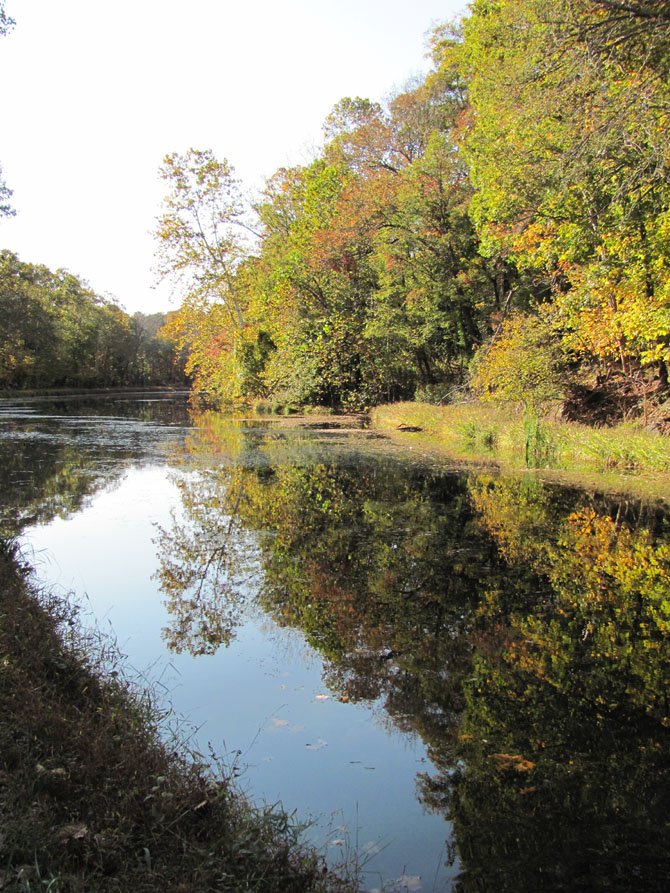Protecting trees also protects water quality, say advocates for two bills before County Council. Builders say the bills add too much bureaucracy. Above, the Potomac River near Old Anglers Inn. Photo by Ken Moore.
Potomac — Next Monday, Feb. 25, the County Council’s subcommittee on Transportation, Infrastructure, Energy and Environment is scheduled to address two bills that focus on the protection of trees.
Councilmembers Roger Berliner and Marc Elrich sponsored the Montgomery County Streets and Roadside Tree Protection Bill, Bill 41-12, which would require county permits for any work done in the county right-of-way that affects roadside trees. The bill would require that the Department of Permitting Services to work with the Chief of Tree Maintenance in the county’s Department of Transportation to determine if a tree can be saved, or if the applicant would contribute to a tree fund to ensure its replacement. The bill would also authorize a tree replacement fund to pay for needed roadside trees and would direct the County Executive to adopt regulations that further develop standards for roadside tree work, according to Council documents.
“The sponsors of this Bill crafted it to closely mirror state law,” and the bill would authorize the county to supplement state regulation and protection of roadside trees, according to Michael Faden and Amanda Mihill, legislative attorneys for the council.
“The state law is not working. The Department of Natural Resources does not have staff to enforce it,” testified Arlene Bruhn, of Conservation Montgomery, at a public hearing on the bill last month. She said the county has several inspectors who can investigate and enforce right of way permits quickly.
“The trees along county roads are significant county assets. They are the backbone of our green infrastructure. They are essential to our quality of life,” said Bruhn.
S. Robert Kaufman, with the Maryland-National Building Industry Association, said “the argument that the county should have the right to regulate its trees compelling,” but he objected to layering of bureaucracy and fees.
“If the bill only moved the permit from the state to the county; no problem,” he said. “However, in addition to adding a new permit process since they cannot eliminate the state permit, this bill adds an application fee, a tree removal fee, a tree replacement fee and protection for tree canopy on private property.”
The Tree Canopy Conservation Bill, 35-12, would:
save, maintain and establish tree canopy;
maximize tree canopy retention and establishment;
establish procedures, standards and requirements to minimize the loss and disturbance of tree canopy as a result of development;
provide for mitigation when tree canopy is lost or disturbed;
establish a fund for tree canopy conservation projects;
generally revise County law regarding tree canopy conservation, according to the bill.
“Currently, the Forest Conservation Law does not apply to most disturbances to individual trees outside of forests during development. Also, it does not apply to development activity on lots less than approximately one acre,” according to Council documents.
“When the [county’s] Forest Conservation Law was adopted, the majority of development in the county was occurring on large, previously undeveloped parcels, much of which was forested,” Councilmember Roger Berliner wrote to County Executive Isiah Leggett last October. “As the amount of undeveloped land in the county has diminished, the majority of development is now occurring on smaller, previously undeveloped ‘in-fill’ properties or as the result of redevelopment of previously built-out sites. While these parcels contain few forests, they often contain significant tree canopy.”
The bill discourages the common practice of clearing trees from small lots during redevelopment, said Ginny Barnes, of West Montgomery County Citizens Association.
“This bill is the product of many years of discussions with a variety of stakeholders,” said Robert G. Hoyt, director of the Department of Environmental Protection, in testimony at the public hearing last month. “Trees contribute significantly to the quality of life in our county, particularly in our residential neighborhoods. It is critical that we establish a regulatory framework to protect and enhance this valuable resource for future generations.”
“Both of these pieces of legislation are overdue,” said Barnes. “Trees are invaluable to air and water quality. They stabilize temperatures, reduce energy costs, contribute to physical and mental health, increase property values, and act as an economic stimulus to recreation and tourism.”
The council’s subcommittee is holding its second work session on these bills on Feb. 25. The full Council is scheduled to meet later this year.

